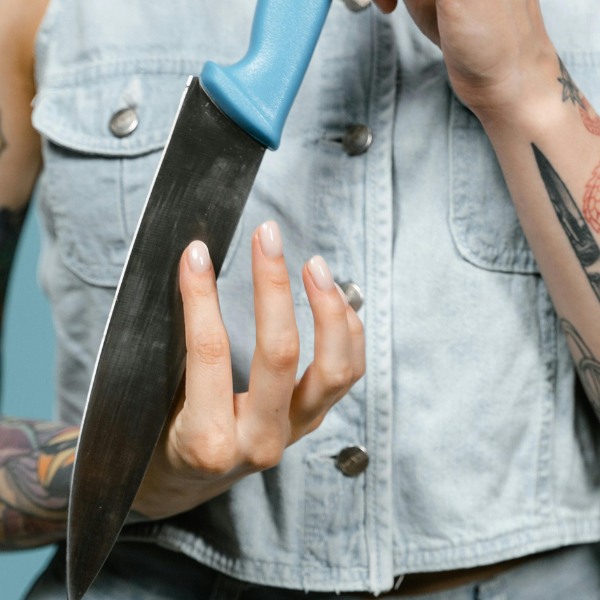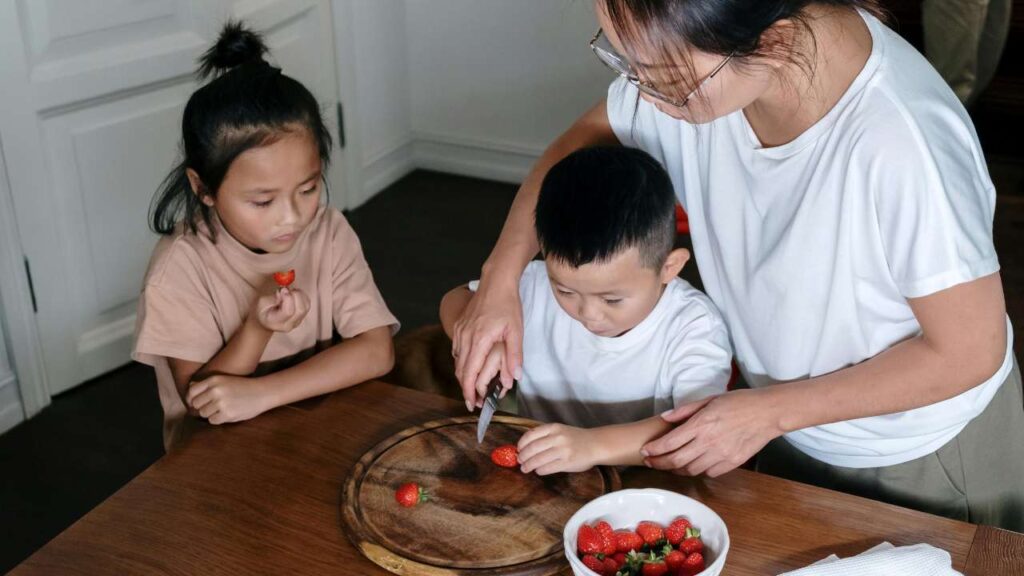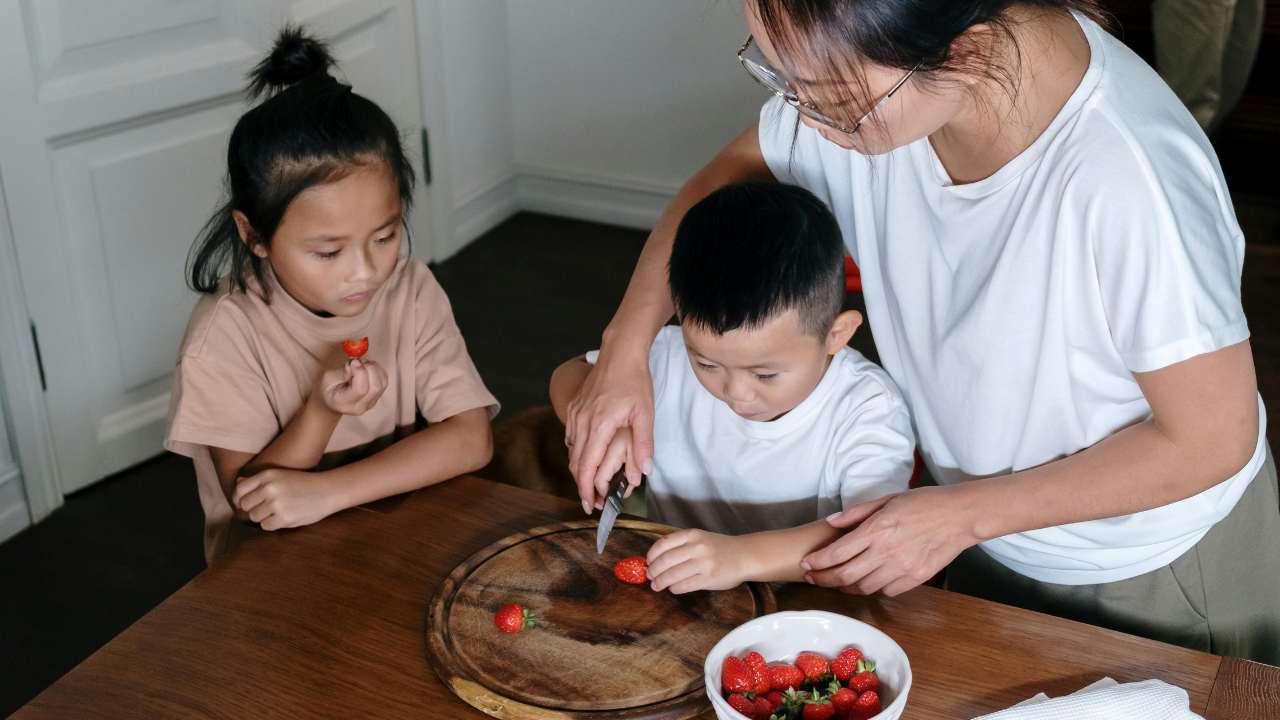Kitchen knives are essential tools for any cooking enthusiast, but they also come with risks if not handled properly. Understanding safety rules can prevent injuries and make your kitchen experience smoother. So, what are the knife safety rules in the kitchen? In this blog post, we’ll explore 11 crucial safety tips to help you use your knives efficiently and securely.
These tips are simple to follow and can make a big difference in your daily cooking routine.
11 Kitchen Knife Safety Rules

1. Always Use a Cutting Board
Using a cutting board provides a stable surface, which prevents the knife from slipping. Avoid cutting directly on countertops as it can damage both the surface and the knife blade. Choose a sturdy cutting board with non-slip grips for added safety. This is one of the fundamental kitchen knife safety tips.
2. Keep Your Knives Sharp
A dull knife is more dangerous than a sharp one because it requires extra force, increasing the risk of slipping. Regularly sharpen your knives to ensure they glide smoothly through food. Safe handling of knives in the kitchen includes maintaining their sharpness to minimize accidents.
3. Hold the Knife Properly
Always grip the knife firmly by the handle and position your fingers away from the blade. Using the pinch grip technique—where you pinch the blade near the handle with your thumb and index finger—gives you better control. Proper knife handling is a critical safety precaution while cooking.
4. Store Knives Safely
Never leave knives lying around on countertops or in sinks. Use a knife block, magnetic strip, or drawer organizer to store them securely. Organized storage prevents accidental cuts and keeps your kitchen safer for everyone.
5. Avoid Distracted Cutting
Focus on the task at hand while using a knife. Avoid distractions like talking, watching TV, or using your phone. Concentration ensures safe usage and reduces the risk of common mistakes.
6. Use the Right Knife for the Job
Different knives are designed for specific tasks. For example, a chef’s knife is ideal for chopping vegetables, while a paring knife works best for peeling and small cuts. Knowing how to use a kitchen knife correctly can improve efficiency and safety.
7. Never Try to Catch a Falling Knife
If a knife slips from your hand, let it fall. Trying to catch it can result in severe injuries. Step back and wait until it’s safe to pick it up.
8. Cut Away from Your Body
Always direct the knife blade away from your body when slicing or chopping. This rule reduces the risk of cutting yourself in case of an accidental slip.
9. Keep the Knife Clean and Dry
Wash knives immediately after use and dry them thoroughly before storing. Wet knives can slip from your hand, while dirty blades can harbor bacteria, compromising food safety.
10. Teach Knife Safety to Everyone in the Kitchen

If others share your kitchen, ensure they understand these safety rules. Teaching children about knife safety precautions while cooking is especially important to prevent accidents.
11. Check the Knife’s Condition Regularly
Inspect your knives for damage, such as loose handles or chipped blades. A damaged knife is unsafe to use and should be repaired or replaced immediately. This ensures the safe handling of knives in the kitchen.
Quick Overview of Knife Safety Rules
| Rule | Why It’s Important |
|---|---|
| Use a cutting board | Provides stability and prevents slipping. |
| Keep knives sharp | Reduces the need for excessive force, preventing slips. |
| Hold the knife properly | Ensures better control and safer handling. |
| Store knives safely | Avoids accidental cuts and keeps the kitchen organized. |
| Avoid distracted cutting | Focus reduces the risk of accidents. |
| Use the right knife | Improves efficiency and ensures safe usage. |
| Don’t catch falling knives | Prevents severe injuries. |
| Cut away from your body | Reduces the risk of self-inflicted cuts. |
| Clean and dry knives | Maintains hygiene and prevents slipping. |
| Teach knife safety | Ensures everyone follows safe practices. |
| Check knife condition | Prevents accidents caused by damaged tools. |
Conclusion
Kitchen knife safety is not just about avoiding injuries but also about enhancing your cooking experience. By following these 11 rules, you can handle knives confidently and prevent common mistakes. From using the right cutting board to keeping your knives sharp, these tips cover every aspect of safe knife handling.
What are the knife safety rules in the kitchen? They’re simple, practical guidelines that anyone can follow to make their kitchen a safer place.
FAQ’s
What are the knife safety rules in the kitchen?
The rules include using a cutting board, keeping knives sharp, storing them safely, and using the right knife for each task. Following these tips ensures safer cooking practices.
Why is a dull knife more dangerous than a sharp one?
A dull knife requires more force to cut, increasing the risk of slipping and causing injuries. Keeping your knives sharp is essential for safe handling of knives in the kitchen.
How can I store my knives safely?
Store knives in a knife block, magnetic strip, or drawer organizer. Proper storage prevents accidental cuts and keeps your kitchen organized.
What should I do if a knife falls?
Never try to catch a falling knife. Step back and let it drop to avoid injuries. Pick it up safely once it has landed.
How do I teach children about kitchen knife safety?
Start by explaining the basic rules, such as cutting away from the body and using a cutting board. Supervise their use of knives and provide age-appropriate tools to ensure safety.


One thought on “11 Kitchen Knife Safety Rules to Avoid Common Mistakes”